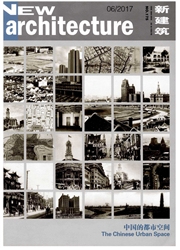

 中文摘要:
中文摘要:
在中国社会经济转型过程中,大城市的居住空间分异现象日益得到重视,而针对街区尺度上的分异现象的研究未见启动.以北京市三里河地区四个居住小区为调研实例,以美国地理学家保罗·诺克斯的“环境质量评价细目表”为调查蓝本,从外部景观、接近度、舒适度及供给度四个要素出发,对四个小区的分异状况进行测评,并结合居民访谈,对分异现象的成因及其影响进行了分析.研究结果显示,政府权力与市场机制的双重作用,包括住房产权制度变化、特权阶层的存在、单位制度的延续等,都对街区尺度上的居住空间分异造成了影响.这—现象的社会涵义和未来路径尚待进一步研究,但对它的存在,应该引起社会的关注.
 英文摘要:
英文摘要:
In transitional China, the increasing living space differentiation has attracted more and more attention. This article uses "appearance, access, amenity, and provision" , the four dictators listed in the "Index Schedule for the Assessment of Environmental Quality" developed by American geographer Paul L. Knox, to measure the spatial differentiation in the four neighborhoods in Sanlihe District of Beijing and analyzes the results in combination with the interview feedbacks from the residents. The authors found that other than residential quarter development trend, the interaction between government and market powers, such as the property rights system change, residents change, the emergence of a privileged class and the working unit, has attributed to the differentiation of living spaces of the residents, some in more subtle ways than others. As a new phenomenon, the long term trend of this development and its social implications are worthy topics of study.
 同期刊论文项目
同期刊论文项目
 同项目期刊论文
同项目期刊论文
 期刊信息
期刊信息
